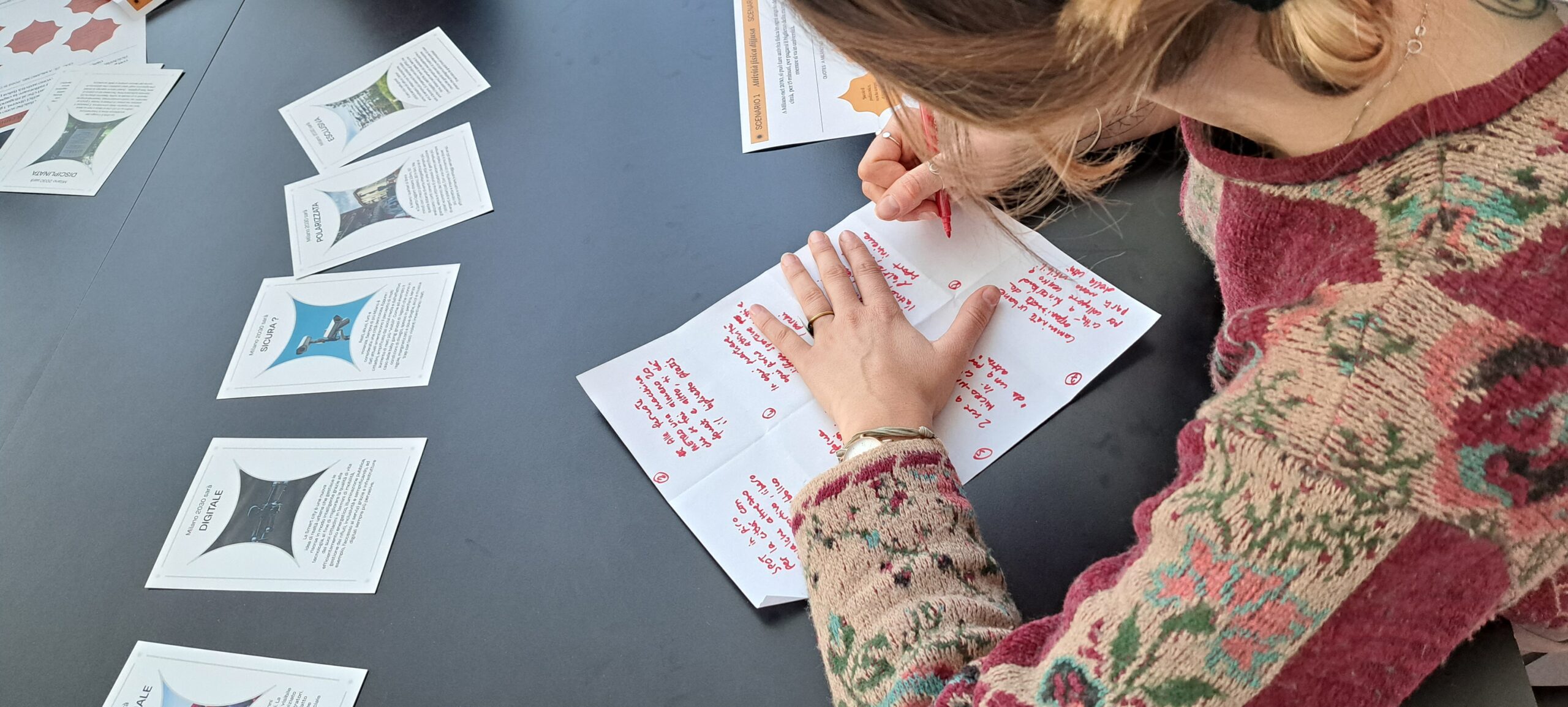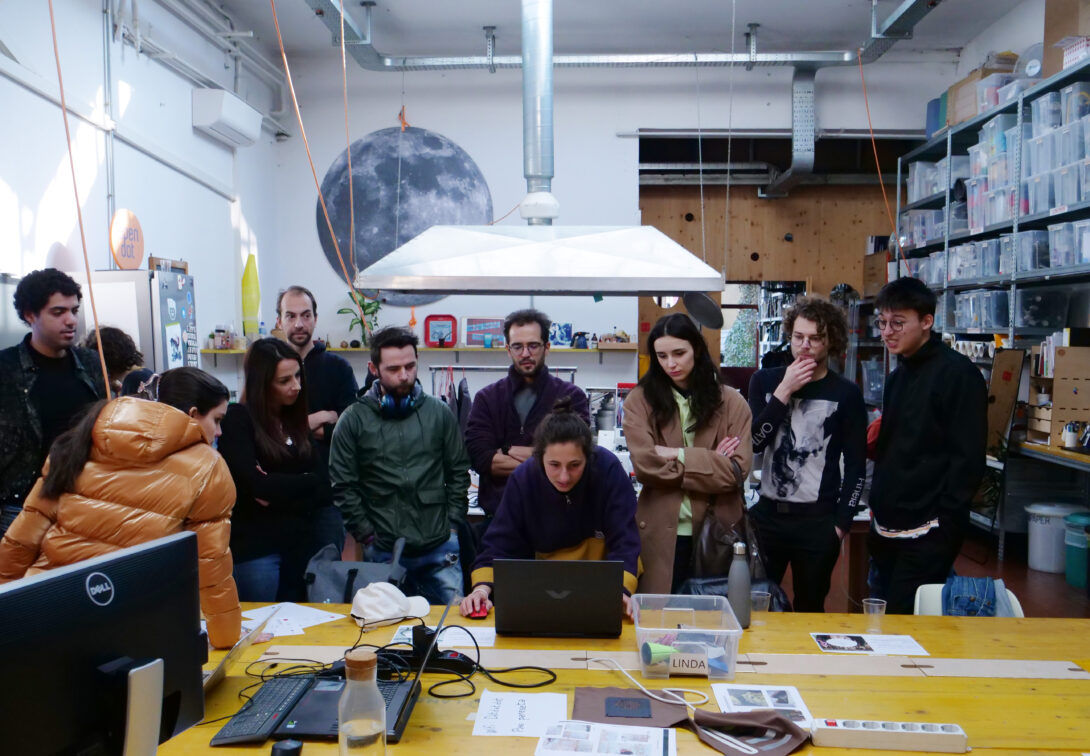Interconnected Wave: Towards an eco-centric design approach
This article is part of the book ‘Driving Design: Volume 2’.
Over the last two decades, design has had to realign its role and new focal points have emerged, such as user-centred design, interaction design and information design, all of which place people at the centre. Hence the term human-centred design focuses on an experience that is tangible and/or immaterial. Design has transcended the boundaries of making objects and has expanded into a broad and evolving field that encompasses different disciplines, each with its own focus and methods, as well as the nature of co-design. Today, co-design is an established term that describes the process of designing with people to address specific needs and/or challenges – from the individual to the international community. With the continuous and rapid change brought about by advanced technologies, new tasks are emerging and design is evolving with approaches such as critical design, speculative design, discursive design and attitudinal design. The big question now is how we can move from a human-centred design approach to an eco-centric focus that addresses a future that is already here.
DESIGN YESTERDAY
Today, design is understood (by designers) as a project culture that encompasses a range of creative and technical methods and approaches to solving a problem. Over the last two decades, design has increasingly evolved and gone beyond simply “making beautiful things”. For this reason, design, understood as a way of thinking, has spread to countless areas.
This leap from discipline to tool gave rise to the term design thinking, whereby the method transcends the boundaries of the production of objects and extends to the design of services, interactions and relationships between people.
Design thinking expanded the idea of “design” and turned the designer into a “goddess of answers” providing a tool for subscribers to deal with an endless series of challenges between people and things, things and technology, technology and situations, and all the transitions in between.
Although the intentions may be good, it has been shown that design thinking falls short in the execution and aftermath of an innovation. The real challenge today is not to come up with great ideas, but to understand and overcome the real challenges an idea faces in its realisation and how to sustain its development in a rapidly changing social and environmental environment that connects all people, technologies and systems, human and non-human.
In this historic period of radical change, digitalisation has revolutionised our lives. With increasing connectivity, the spread of networks, platforms and a wide variety of digital media, we are living in a phase in which everything is on the move. As a result, systems are becoming increasingly permeable, meaning that traditional ways of thinking and acting no longer work. The world is therefore looking for something that is able to manage fluid systems and complex problems that require both technical solutions and an understanding of behaviours and people to solve.
Thus, design answers the call and transforms itself, thanks to its ability to act as a bridge between the social and the technical, and as a discipline capable of thinking and realising new visions through design skills and a creative approach.
This is how what we call co-design or participatory planning came about. Co-design does indeed have all the important characteristics to cope with the complexity of our time: it is a methodology that enables people to become designers with the help of specific tools and a creative approach.
CO-DESIGN
On a practical level, co-design is about bringing a group of people with different backgrounds and skills together for a proactive discussion to develop innovative solutions that have a positive impact on everyone involved. The designer is the one who guides and enables the process in all its phases, bridging technical skills and cultural and relational sensitivities.
The methodology consists of involving people in all project phases, starting with the definition of the need itself. In fact, planning begins with problem identification before problem-solving, because asking the right questions is the first step to finding effective answers.
Today, it is indeed no longer about “doing things well”, but about creating what people desire and need. The key is to involve people in the decision-making process, understand their behaviour and measure their interactions. This is why products, interactions and even decision-making protocols or company dynamics are being co-designed today.
At OpenDot, specific technology expertise and relationship skills are juxtaposed and brought together in an approach in which people are active parties. Human and technical skills are integrated, not mutually exclusive, and the designer becomes the one who manages and facilitates the dynamics of heterogeneous groups by accompanying people in co-design and rapid prototyping, who are not only able to realise ideas but also and above all to test them thanks to iterative processes, as, for example, in the world of Fab Labs.
Co-design is therefore a discipline that supports anyone who strives for innovation and change. In other words, practising co-design does not mean having a map to improve the world, but the compass to orient oneself, and therefore participatory design adapts to the most diverse contexts.
SPECULATIVE DESIGN
In the realm of design, our creative endeavours go far beyond the limitations of the present moment. Rather than designing for the present landscape, our focus is inherently future-orientated. We are constantly engaged in projecting and envisioning a world in which our work will find its place. Even in design processes characterised by rapid change, such as publishing, the perspective remains forward-looking, always considering how people will interact with and experience our creations in the future. Our design ethos is about designing for a world that does not yet exist. This requires us to constantly imagine and make assumptions about the conditions and possibilities of the future we aspire to. This shift in focus over the last decade is evident in the increased exploration of various ecological and political scenarios, a testament to the profound impact these issues have on our collective attention and imagination.
To explore the concept of speculative design, we began a discussion with Matt Ward, a designer, author and educator. Our conversation centred around the importance of co-design when it comes to taking proactive and forward-thinking approaches and aligning with the principles of speculative design.
Find the full article and interview on p. 14 of the ‘Driving Design: Volume 2’ book.
Read it online here.


